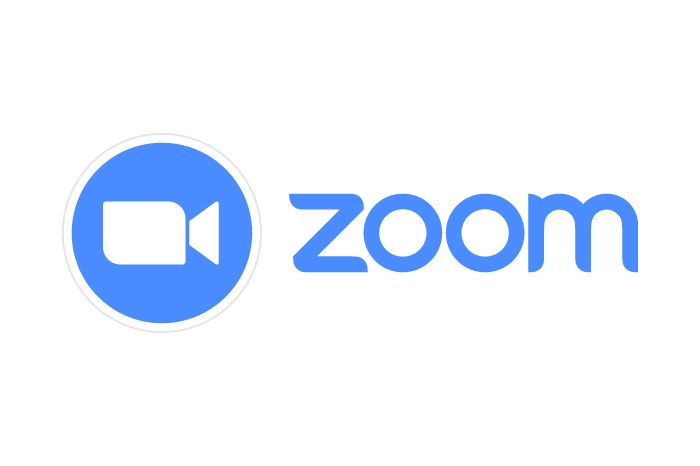The pandemic shifted the entire world to do work and get entertained remotely. Since people were caged in their homes during the lockdown in 2020, Zoom has provided them with an easy-to-use and reliable video-conferencing platform to connect with their loved ones online. Despite the crowded market with many video meeting apps, Zoom has leaped because of its user interface, scalability, and features. As of this year, 2024, it has gained over 300 million daily active users.
Its brand name became a household in lockdown. From students and educators to corporate employees, entrepreneurs, and internet influencers they used Zoom for their communication needs. This communication program has become so important that even after the pandemic, many still use it to remotely conduct meetings, classes, webinars, and conferences.
What is Zoom App?

Zoom is a leading video-conferencing or virtual meeting platform. It allows users to conduct video meetings, audio calls, chat, and collaborate virtually from anywhere in the world. With both free and paid features, it has emerged as one of the best players in the market.
You can use it on your phone or desktop to connect with anyone online. People generally use it for conducting client meetings, online classes, events, webinars, office meetings, and even virtual birthday parties.
Zoom Logo

The simplicity of the Zoom logo reflects our culture today. When you see the Zoom icon, you either view the large blue letters or with certain programs within Zoom, you will see the words with a small white camera surrounded by the popular known blue color of the program.
The Zoom logo drives even more traffic to its program because of this aspect. Distracting logos can prevent an audience from taking the site seriously, thus limiting the individuals the company can reach. It doesn’t seem like Zoom is having any problems with reaching people. How does Zoom make money? Well, the simple Zoom logo has a bit to do with the initial attraction to the program.
What is the Business Model of Zoom? Zoom Business Strategy

Zoom works on the Freemium business model. It means that you can use the apps for free with some basic features. But you have to pay a certain amount monthly or yearly to get access to premium features. In other words, individuals and small teams can use it for free. They earn by charging B2B customers.
It has surpassed its competitors because of just one major feature: Zoom is easy to use. It has brought the bar-to-entry so low that it does not require any tech knowledge to set it up. Therefore, from boomers to Gen Z, it has conquered the varied user base.
The simple interface, HD results, and scalability make it unbeatable in the market. It started as a B2B enterprise, captured the B2C market, and effectively made its brand name a verb for video calling.
How Does Zoom Make Money If It’s Free?
Zoom offers several subscription plans to cater to different businesses, large enterprises, and brands with complex communication needs. They have set pricing plans with several paid add-ons and hardware support that make up their revenue.
Following are some ways Zoom makes money.
1. Zoom Subscription Plans
It may seem like Zoom couldn’t possibly make much money with a communications program since this is no new thing to online business and social connections. However, this platform has several tier options that allow you to decide whether to go the free route or pay and unlock other options, meeting your remote communication needs.
Tier 1: Basic – for 1 user
With this tier, you can host up to 100 people, hold meetings for up to 40 minutes, and start an unlimited number of meetings at any given time. This is a good option for social situations, such as keeping in touch with friends and family. Many individuals are probably using the free option during this pandemic crisis.
Tier 2: Pro – for 1 to 9 users
With this option, you can also host up to 100 participants, or use the Large meetings add-on for more, and host meetings for up to 30 hours. You get 1 GB of cloud recording, with a license, of course, and also use social media streaming. This option is a good choice if you have a small team, but need more time to develop ideas or plans.
Tier 3: Business – for 10 to 250 users
You can host up to 300 participants with the business tier. With the Large meetings add-on, you can add up to 1,000 instead. You have single sign-on, company branding, managed domains, transcript recording, and all the features included in the Pro plan. This tier is suggested as a perfect tool for small and medium businesses.
Tier 4: Business Plus – for 10 to 250 users
The top tier not only offers meeting features but also phone features. Users can host up to 250 people with features like cloud storage, visitor management, and translated captions.
Tier 5: Enterprise – for more than 250 users
Users can add up to 1,000 participants per meeting and utilize the webinars and room options to conduct their virtual meetings. Unlimited whiteboards, a 30-hour duration, and unlimited local and cloud recording with team chat are available.
2. Rooms and Work Spaces For Hybrid Teams

Zoom rooms provide a more seamless experience to connect live teams with remote workers by connecting them via wireless video conferencing, screen sharing, and audio-based conferences.
It is beneficial for large corporations that have remote teams all across the world, and they need seamlessly connected devices to schedule meetings. In this way, they can use any reserved Zoom room to conduct their large meetings.
Zoom makes money by selling Zoom Room subscription plans as well:
A free trial is available for free for 30 days, but you need to pay $49 per month per room with up to 49 licenses. The enterprise plan is $49 as well, but you can get more than 49 licenses. You can contact their sales team for a large-scale custom plan.
3. Zoom Phone
Zoom also offers affordable VoIP service, which includes unlimited international calling, chat options, call management tools and integration of 3rd party apps like Slack, Microsoft, and Salesforce.
There are 3 tiers of subscriptions in Zoom Phone that help them earn.
- $10 per month on US and Canada number
- $15 per month for unlimited regional calling
- $20 per month for 40+ countries
Moreover, they have several paid add-on options, like Zoom Phone Power Pack, Tool-free numbers, Additional Numbers, and International Calling Add-on.
4. Zoom Video Webinar
Zoom Video Webinars are for long-hour events or programs that have at least 50,000 attendees. It offers HD quality and interactive screens so users can engage and network.
It starts at $340.00/month for 1000 participants, but the prices increase with the number of attendees.
5. Zoom Events

Zoom Events are similar to Webinars, but they offer more customization, interaction options, and a whole different virtual experience. Like any in-person event, it allows attendees to register, get entry, and move around while listening to the panelists.
The hosts have complete control of the event. They can customize the event, analyze the metrics, and track progress at any point in time. Zoom Events also has several paid add-ons that constitute the profits of Zoom as a company.
How Does Zoom App Work?

Zoom has made the video-conferencing so simple! By just following on-screen step-by-step instructions, anyone can launch a meeting or join an ongoing one through the link.
How to Use Zoom?
To Zoom on your desktop computer or laptop, download Zoom via the website and sign up with your Google or Facebook account. If you want to join the meeting, you must have meeting details already. Enter these details and let the host accept your joining request.
Once you join the meeting, you can control the camera and mic settings, screen-share, and chat in the basic version.
What is a Zoom Meeting?
A Zoom meeting is simply a conference call using the video platform. Whether your meeting is social or business, it works in similar ways. Depending on the tier you choose, you can either chat or use the other features. Zoom meetings last for different time durations and host various numbers of individuals, also depending on tier selection.
The Zoom Waiting Room
If you happen to be the host of a meeting, then you’re in control of who joins. The Zoom waiting room is where other members wait until added to the meeting by the host.
How to Raise your Hand in Zoom?

If you need to get someone’s attention during the meeting, it’s like being in school. Maybe, you are in a Zoom classroom. Either way, it works the same. You simply press Alt Y on your keyboard and toggle the hand raise button back and forth. This should get their attention.
Zoom Outlook Plug-in
The Outlook plug-in is designed to make meetings much easier in Microsoft Outlook. This option is only available in macOS 10.14.
The Saas Application Architecture of Zoom

SAAS hybrid and infrastructure was created to meet all needs. The structure of Zoom is like no other before it. It meets all storage and backup needs. Up to 350 devices (multi-media routers) and users can connect in meeting rooms. Its architecture is designed to meet the needs of millions of users simultaneously.
Zoom connects with service providers and SAAS (software as a service) digital business partners that operate with the Equinix platform. Because of these connections, Zoom has data centers in places around the world, with two here in the States. Because of Zoom’s architecture, its traffic can bypass public internet service and create a private connection, thus reducing things like latency.
The Brief History of the Zoom App

Although the platform was already in high use, the COVID era caused a great acceleration of popularity for the online communication capabilities of Zoom.
Interestingly, SaasBee was the original name of Zoom. there wasn’t much hope for the platform because the internet was already full of online communication options. But, because of interested investors, things changed, including the name. The name Zoom was born from a children’s book called Zoom City.
Owners and Co-founders of Zoom
Eric Yuan was the founder of Zoom (Former Vice-President of Cisco Webex). Followed by 40 engineers, he created the platform. By May of 2013, despite many changes and growth, Zoom had over a million users.
The launch and growth of Zoom
Zoom was first launched in 2011, targeting enterprises and businesses. From 2015 to 2019, it gained both popularity and funding, making it a more efficient option for video-calling. Its market value increased, and the company started targeting educational institutes and individuals.
The 2020 pandemic turbo-charged popularity, growth, and demand of Zoom. Despite some hiccups, it has been growing ever since.
The Early fiascos of Zoom
Like anything else, Zoom isn’t perfect. Something called Zoombombing has affected many people during social, school, and business calls, in the form of hijacking meetings, using hate speech, and even replacing screens with pornographic images. However, much of this problem is being controlled, along with an FBI warning to those responsible. However, there’s still a chance of future disturbances.
But there’s good news. Zoom published a guide on how to protect online meetings. It has also changed settings for universities and schools to make communications safer. Flaws in Zoom’s software allowed spies to hack microphones and webcams, which is how the fiascos grew with such intensity.
Zoom and Its Competitors: Skype, Facetime, Microsoft Teams and Google Meet
Since Zoom seems to have rave reviews, aside from its issues with hackers, it seems to rise above the rest. One of the most important features, as mentioned before, is its capabilities within the cloud where it originated. When compared with communication platforms such as Skype and Facetime, it’s more user-friendly and provides a multitude of tools and options for a variety of users.
Annual Revenue Generation of Zoom Video Communications

Zoom and its products peaked during the pandemic. During the years 2020 and 2021, its revenue generation jumped from $1.96B to $3.91B. However, the numbers drastically slowed in 2023, reaching only up to $4.5B.
Currently, in 2024, it is standing at almost the same number: $4.53B, which is surprising. In other words, its revenue increased by just 3% during years 2023-2024.
Zoom has witnessed a sharp drop in its market cap as well. It peaked in 2020 at $158.99B and came down to $20.38B at the start of 2024, and has been constantly decreasing ever since. The market cap depicts the worth of the company, and the market cap of Zoom is clearly showing its fading charm.
Net Income of Zoom Video Communications:
According to the Annual Report on Form 10-K for Zoom Video Communications Inc., for the fiscal year ending January 31, 2024, the company had a net income of $637.5 million. It is a significant increase compared to 2023 when the net income was just $103.7 million.
Conclusion:
Despite some setbacks, Zoom has emerged as the single most used app for remote meetings. Millions of free and paid users utilize this platform to have online conversations for hours, so it’s pretty easy to see how Zoom makes money. Will it be this successful in the future? Well, we don’t know. But chances are, Zoom has a bright outlook overall.




